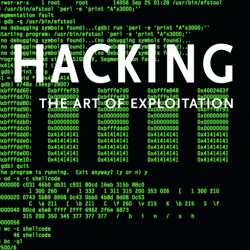Hackism: A Type of Graffiti, in the Digital Age?

What is a Hacker?
- At first glance, we don’t normally associate hacking with graffiti art. When we think of hacking, we imagine systems and networks, computers and codes. The community is made up loosely of technologically-adept computer users who break security boundaries on cyberspace. On the other hand, when we think of graffiti, we see spray cans and walls, markers and paper. Graff writers are most often urban youth artists who tag walls and other public spaces.
- However, let us consider where hacking and graffiti interact on the online environment.
- Bruce Schneider, a renowned security writes in his blog that: “A hacker is someone who thinks outside the box. It's someone who discards conventional wisdom, and does something else instead. It's someone who looks at the edge and wonders what's beyond. It's someone who sees a set of rules and wonders what happens if you don't follow them. A hacker is someone who experiments with the limitations of systems for intellectual curiosity.”
- This definition of hacking runs surprising parallel with common conceptions of graffiti, which is not a new concept. In academic and general discussions about hacking, some terms that have popped up include: cyber graffiti, e-graffiti and hacktivism. Indeed, the associations are fair…
Comparisons to Graffiti
- Both are acts of risk-taking. In many, if not all jurisdictions, there are regulations that formally outlaw defacing public properties, as well as breaking into a computer/a network. This means that both hackers and graffiti writers understand that there is a gray area in the art that they practice in terms of legal and moral grounds.
- Both are categorized as a subculture away from the mainstream, and not everyone understands why they do what they do. Moreover, while not everyone agrees with their methods, there is often an unsaid tolerance that in cases when their art is not harmful to society, people may let the action go on – in essence, turning a blind eye.
- There is a similar general agenda: for example, they are both fighting for a right to express themselves in whatever manner they choose to, even when authority and mainstream morality does not recognize this as a right. Even when there are negative connotations attached to their work, most will continue with expressing their thoughts through their artwork.
- In terms of marginalized authorship, both require knowledge of a certain skill set (i.e. understanding computer codes, or recognizing tagging styles and artistic elements, etc.), but membership is not absolute and is not judged with only one set of standards. The composition of members in both groups is varied, with a loose structure and organizational theme.
- As subcultures, there is a resistance to mainstream culture. “While dissidence and deviance are always defined by the society and culture in power, the definitions of propriety, morality and action vary between these groups and the mainstream. What may seem inappropriate to others, is the only natural way members of either subculture can act to insure truthful, and justified, support for their cause and belief.” (Piratical Rascals)
- Most of their work is individually created, with only some instances of collaboration between more than one artist. They work in a community that does not usually have a lot of control and supervision of the work, which allows for a wide variety of artwork styles and techniques. There are, of course, small networks that do try to exchange knowledge, such as with gathering graff artists in parks sharing ideas. With the connectivity of the Internet, there are even more instances where sharing between members are facilitated. There are online graffiti portfolio sites such as Graffiti NWX, and multiple forums and websites teaching and exchanging hacking stories and techniques.
- Their works can be artistic, but can also carry important social activism messages
- Click here for a blog arguing the similarities between graffiti artists and computer hackers
Differences
- Not all elements are the same between the traditional sense of graffiti art and hacking, of course. Other than the most obvious differences in tools, there are also other differences.
- Other than expressing against the constraints of society, hacking is also used for: unauthorized access to other’s personal and sensitive information, fraud, gaining control over systems, etc.
- The degree of damage of hacking can be a lot more far reaching in comparison. While defacing public property can cause inconvenience to an amount of people, such as those who own the building, those that need to clean up, etc, the effects are generally limited to those directly related. Hacking, on the other hand, has many possibilities. Defacing a public website, for example, is more often seen as a practical joke, but even then, the affected user base can reach hundreds of thousands, depending on the site traffic (see more examples of defaced websites here). Hacking into financial institutes for personal banking information is of a much larger consequence as well.

